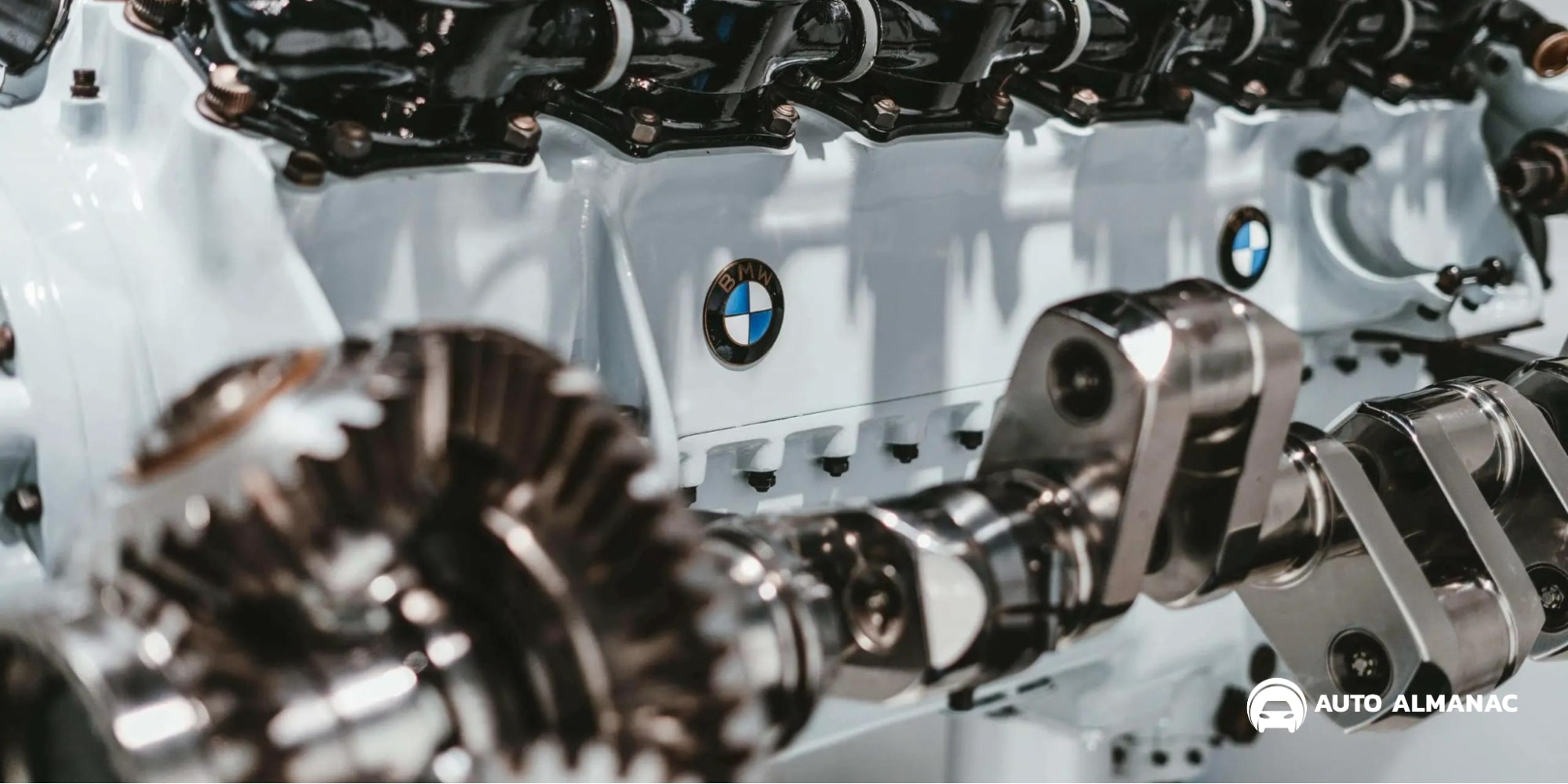
Replacing the camshaft position sensor is a common repair for several engine issues, including rough idle, stalling, and poor acceleration.
However, if you’ve replaced the sensor and are still getting the same error code, it can be frustrating and confusing. What could be causing the problem, and how can you fix it?
To find out what might be causing the problem, you will first need to check a few components such as the sensor itself, the circuit, the reluctor wheel, the starter motor, internal engine components, or the ECM itself.
After that, you will need to fix the problem by following our simple guide provided below. Even if you are able to, you shouldn’t drive the car with the P0340 code on as that can cause further damage to many of your car’s essential systems.
If you have decent experience, you should be able to tackle this issue yourself, just be sure to gather all the right tools (OBD-II scanner, multimeter…) and follow all of the guides listed down below carefully.
Whether you’re a seasoned car expert or a DIY mechanical enthusiast, this guide will help you get to the bottom of persistent camshaft sensor problems and get your engine running smoothly without hiccups.

What error codes show for camshaft position sensor problems?
There are a few notable codes that tend to show up with a camshaft sensor problem, but the P0340 is by far the most common.
- P0340: Camshaft Position Sensor Circuit Malfunction
- P0341: Camshaft Position Sensor Circuit Range/Performance
- P0342: Camshaft Position Sensor Circuit Low Input
- P0343: Camshaft Position Sensor Circuit High Input
- P0344: Camshaft Position Sensor Circuit Intermittent
What does the P0340 error code mean?

The P0340 error code is a diagnostic trouble code (DTC) that indicates a problem with the camshaft position sensor circuit.
Specifically, it means that the signal from the camshaft position sensor is not being received properly by the engine control module (ECM).
The camshaft position sensor is responsible for providing the ECM with information about the position of the camshaft, which helps the ECM determine the correct timing for fuel injection, ignition, and a few other vital engine metrics.
If the signal from the camshaft position sensor is interrupted or lost, the ECM may not be able to control the engine properly, leading to a sleeve of issues that typically hamper your driving ability.
| Upon encountering the P0340 error code, it’s important to have your vehicle diagnosed and repaired by a qualified mechanic. Ignoring the issue can lead to further damage to your engine and decreased performance. |
Why are you still getting an error code after replacing the camshaft position sensor?
- Circuit Problems
- Damaged Camshaft Position Sensor Reluctor Wheel
- Defective Camshaft Position Sensor
- Faulty Starter Motor
- Improper Sensor Installation
- ECM Problems
Circuit Problems
A damaged or loose wiring or connector in the camshaft position sensor circuit can cause the sensor to malfunction and generate a code even after it has been replaced. A damaged/malfunctioning ground can also do the same.
Therefore, if only one of the components tasked with providing the sensor with a consistent flow of electricity starts acting up, it may throw up the P0340 code even after the sensor was replaced.
Damaged Camshaft Position Sensor Reluctor Wheel
A reluctor wheel (camshaft position sensor wheel) is a toothed wheel that is attached to the camshaft in an engine.
It is used in conjunction with a camshaft position sensor to provide ECM with information about the position and speed of the camshaft.
Because these small wheels generate a supply of electric signals from the ECM/PCM, they can also cause the P0340 code if they can’t pass any electricity.
Defective Camshaft Position Sensor
Even though this is rather rare, a faulty replacement camshaft position sensor can also prompt up the P0340 code because the primary problem simply was not resolved.
This means that your new sensor is malfunctioning just as your old one did, so try to pay close attention to this in spite of the fact that this is rarely the cause.
If your new sensor came with warranty coverage (most of them do), go ahead and replace it with a new one, just be careful not to damage it any further as that may void the warranty.
Faulty Starter Motor
It is unlikely that a faulty starter motor would directly cause a P0340 error code, but there were countless instances where this was exactly the case.
Because the starter motor is tasked with starting the engine and thus is linked with crucial engine performance metrics such as engine timing, ignition, and fuel injection, it could, in theory, cause the P0340 code.
So, if the camshaft sensor gets damaged due to increased levels of electrical supply coming from the starter motor, the P0340 code is far-fetched but technically possible.
Improper Sensor Installation
If the camshaft position sensor was not installed properly, it may not be able to properly read the position of the camshaft and thus lighting up the dreaded P0340 code.
To avoid this, be sure to only take your car to a qualified and experienced mechanic that only works with tested and certified OEM parts and can give you a thorough rundown of what has been done to tackle the issue.
ECM Problems
In rare cases, the issue may be with the engine control module itself.
If the ECM is not properly receiving or processing signals from the camshaft position sensor, it may continue to generate a code even after the sensor has been replaced.
Engine Timing Belt / Internal Engine Component Problem
It is possible for an issue with the engine timing belt or other internal engine components to cause a P0340 error code to be generated.
If the timing belt or other internal engine components are damaged or malfunctioning, it can cause the camshaft to be out of sync with the crankshaft.
This leads to issues with engine performance and therefore prompts up the P0340 code.
How to Get Rid of the P0340 Code
There are a few steps you ought to follow if you want to get rid of the P0340 code for good. First, you need to diagnose the problem properly so you know exactly what to fix.
How To Diagnose the P0340 Code
Diagnosing a P0340 error code requires a systematic approach to identify the root cause of the issue without ignoring all the other possible reasons as well.
Check out our detailed guide on how to diagnose the P0340 code provided below.
Check the Camshaft Position Sensor
The first thing you need to inspect is the camshaft position sensor to ensure it is properly connected and functioning correctly.
Tools needed:
- Multimeter to check the resistance of the sensor
- Scan tool to view sensor data in real-time
It is widely regarded that a 200 to 1,000-ohm reading is OK and means that everything with the sensor’s resistance is fine.
The voltage reading of a camshaft sensor can vary depending on the specific make and model of the vehicle.
However, in general, a camshaft sensor should typically read between 0.5 and 1.5 volts when the engine is running.
It is always best to consult yourself with the manufacturer’s specifications to know which readings are correct for the type of sensor you are using.
Check the Wires and Connectors
After diagnosing your cam sensor, it’s now time to inspect the wiring and connectors in the camshaft position sensor circuit to check for any damage, corrosion, or loose connections.
Check the Reluctor Wheel
Inspect the reluctor wheel for any damage, misalignment, or missing teeth, as these can cause the camshaft position sensor to provide incorrect data to the ECM.
Inspect the Timing Belt
Checking the timing belt is going to ensure it is properly tensioned and in good condition. A damaged or worn timing belt can cause the camshaft to be out of sync with the crankshaft, leading to a P0340 error code.
Moreover, a problem with the belt can cause a plethora of other issues, some of which can even cause terminal engine damage, so be sure to check the belt even if it does not seem to be the root cause of this specific issue.
Test the Starter Motor
It’s now time to use your multimeter and scan tools to properly test out the starter motor.
Be sure to also listen to the starter motor engaging when turning the key as that is likely the easiest way to tell if something is wrong with it.

Test the PCM/ECM
Last, but certainly not least, you should also test out your PCM/ECM to check if all of the essential readings are okay.
This will help you to better narrow down this issue while also potentially showing some other issues that are contributing to the P0340 code.
How to Fix the P0340 Code
Now it’s time to dwell deeper and go about finally getting rid of the P0340 code for good.
Calibrate the Sensor (Relearn the Sensor)
If you don’t recalibrate your sensor after replacing it, the PCM/ECM is still going to read the data provided to it by the old sensor.
Follow this guide to know how to recalibrate it:
- Step 1: Turn the car on, connect your OBD-II scan tool to the car, and auto-detect or select your car’s brand, make, and model.
- Step 2: Navigate your OBD-II to the “Diagnosis” Screen. After that, hit “Control Unit” > “Powertrain” > “ECM” > “Special Function” and keep scrolling until you come across the “Cam Crank Relearing” option. (Be sure to read all the in-system instructions on how and when to relearn the sensor)
- Step 3: If you managed to follow this far, the system should prompt you to start the engine and wait a bit until the coolant temperature reaches optimal temperature.
- Step 4: After all of the temps reach their optimum level, the sensor will start its relearning process immediately. The only thing you need to do is double-check and cross-reference these readings to the ones we mentioned above.
Check the Sensor O-Rings
A fairly common reason why the P0340 code persists is due to an internal problem with the sensor’s O-rings.
As these sensors are a bit difficult to see and feel, some people tend to add more O-rings, which will eventually cause the sensor to leave a huge gap inside the detectors.
If that is the case, be sure to remove the additional o-rings, clean the rings thoroughly, and assemble everything back on.
If this was the problem, the P0340 code is likely going to go away at this point.
Fix the Sensor Wiring and Connectors
If the previous two methods failed to resolve the problem or if your prior diagnosis has shown that the problem might be due to a circuit issue, now it’s time to fix it.
Be sure to test out the wiring harness with all of its wires, connectors, terminals, and grounds to see if there are any hiccups in the flow of electricity.
If so, it’s best to replace the entire wiring harness as these issues are likely to return if you only replace a few connectors to fix it.
- Step 1: Use a multimeter to check each of these components one by one. If the voltage fluctuates between 4 and 5 amps, everything is in order.
- Step 2: Test the sensor grounds for any signs of inconsistency or overloading.
- Step 3: Replace all of the components that can’t maintain a consistent flow/or are being overpowered.

Take Care of the Reluctor Wheel
If your diagnosis has shown broken teeth or a completely faulty reluctor wheel, you will have to replace it.
To do so, it’s best to heat the wheel up to around 200ºF, which should help it pop right out without any force needed.
Inspect the Timing Belt, the Starter Motor, and other Internal Engine Components
A loose, noisy, non-functioning starter belt will need to be replaced, but the replacement method depends on the type of car you have and its respective engine configuration and orientation.
If the starter motor is to blame, you should also replace it, which shouldn’t be too big of an issue as replacing these isn’t overly complicated.
If you believe that some of the engine’s internal components are to be blamed, take your car in for a thorough inspection as diagnosing this by yourself is too challenging.
Replace the PCM/ECM
When it comes to replacing the PCM/ECM, we do need to mention that this is not something you should do yourself if you don’t have adequate experience.
| The PCM/ECM controls some of the car’s most essential metrics, which means that the installation needs to be done exactly right. Otherwise, you could cause a lot of issues to your car, some of which could lead to immense damage. |




